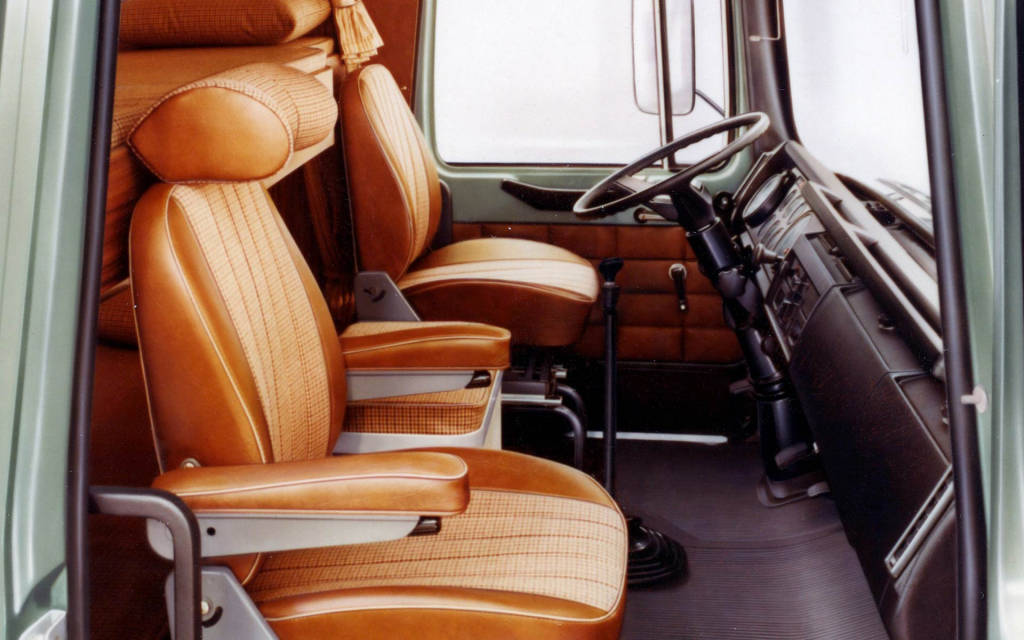
Cabs over the ages
A truck is not merely a commercial vehicle; for drivers it is equally the place where they work and sometimes also relax and sleep. Modern cabs scarcely lack anything in terms of comfort and technical features, but what was it really like in the past? Let’s take a time journey in images:

1915 – 1930
The cabs in MAN trucks from 1915 to 1930 were rather more reminiscent of horse-drawn carriages than of trucks. Back then, the driver’s cab was referred to as the “driving cabin” and was equipped with a wooden roof, leather-covered seat cushions and a backrest for three people. Frequently there wasn’t even a roof and the cab only had side doors and a two-part windscreen at the front, the right-hand section of which could be folded out. The doors, moreover, didn’t have side windows at that time.
1930 – 1950
The size of both truck and cab became larger and larger from the 1930s onwards. The cab was now fully enclosed with windows and had a seat cushion and backrest with leather upholstery to comfortably accommodate three people. Things had also progressed in technical terms; this included the cab now being equipped with a fully electric light and starter system, electric windscreen wipers, an illuminated dashboard and an electric signal horn. The letters “MAN” also adorned the chrome-plated radiator grille as early as 1928. The MK25 and MK26 models even had a heater from 1949.


The cab after 1951
The MAN F8 model, which was introduced in 1951, enabled drivers to enjoy a vast array of convenient innovations. The cab size was increased, the seat’s height and leg length could be adjusted and some vehicles even had a folding table for meals. It was even possible to sleep in some models, either in the so-called “swallow’s nest”, a sleeping alcove that connected to the driver’s cab at the rear, or in the large-capacity driver’s cab with fold-down seats, as shown in the picture.
End of the 1960s
The new “Pausbacke” (chubby cheeks) cab model was released on the market at the end of the 1950s. The number of front windscreen wipers was increased to three and the standard heater ensured rapid defrosting of the windscreens. The sleeping area in particular meant that drivers could now make themselves more comfortable than ever before, since a tubular frame with a sheet metal floor now served as a base for the mattress, which increased comfort considerably. Grab handles also made it easier to get in and out of the cab.
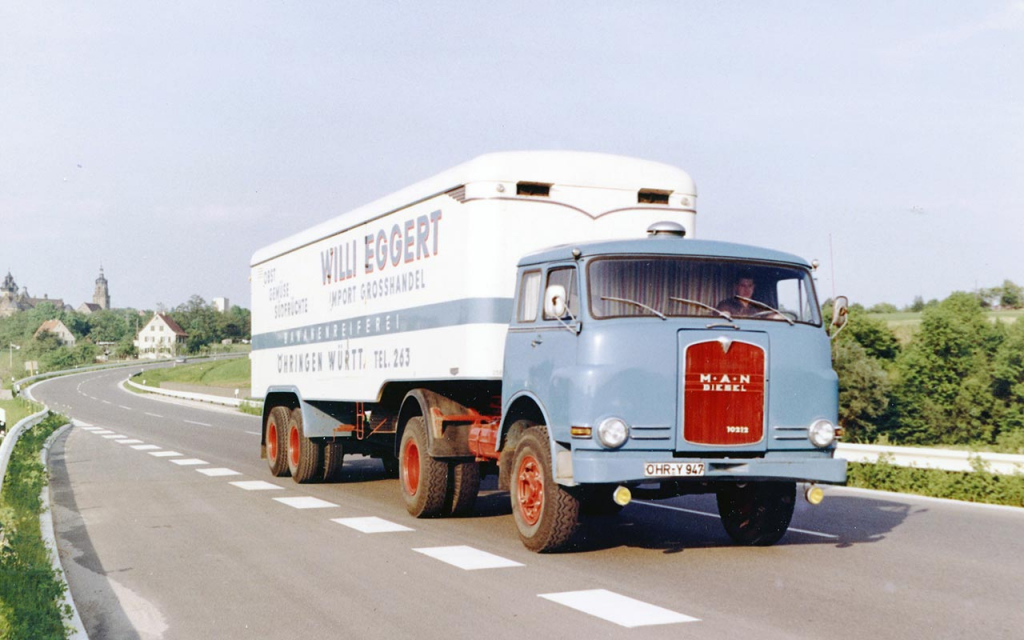

1960 – 1970
The new F7 cab, which was developed in cooperation with French commercial vehicle manufacturer Saviem, replaced the “Pausbacke” at the end of the 1960s. This cab was available in three versions: as a large-capacity cab with sleeping accommodation, as shown in the picture, as a short local transport cab and from 1969 also as an extra short cab for distribution transport on short routes. The cab could be tilted into two positions, which facilitated maintenance and repairs. The driver’s seat had a shock absorber and the passenger seat was equipped with an armrest, headrest and adjustable backrest. The BILD newspaper wrote at the vehicle launch: “Armchair, bed and wardrobe – all the comforts of home!”
The 1970s
The redeveloped F8 cab model was launched on the market in the 1970s. This model featured electric windows and a food container with cool box. Textile side and rear wall panelling, a wardrobe with sliding doors and heated, hydraulically cushioned seats were offered as optional extras from 1979 onwards. MAN placed a spoiler on the cab roof to improve aerodynamics and reduce fuel consumption.

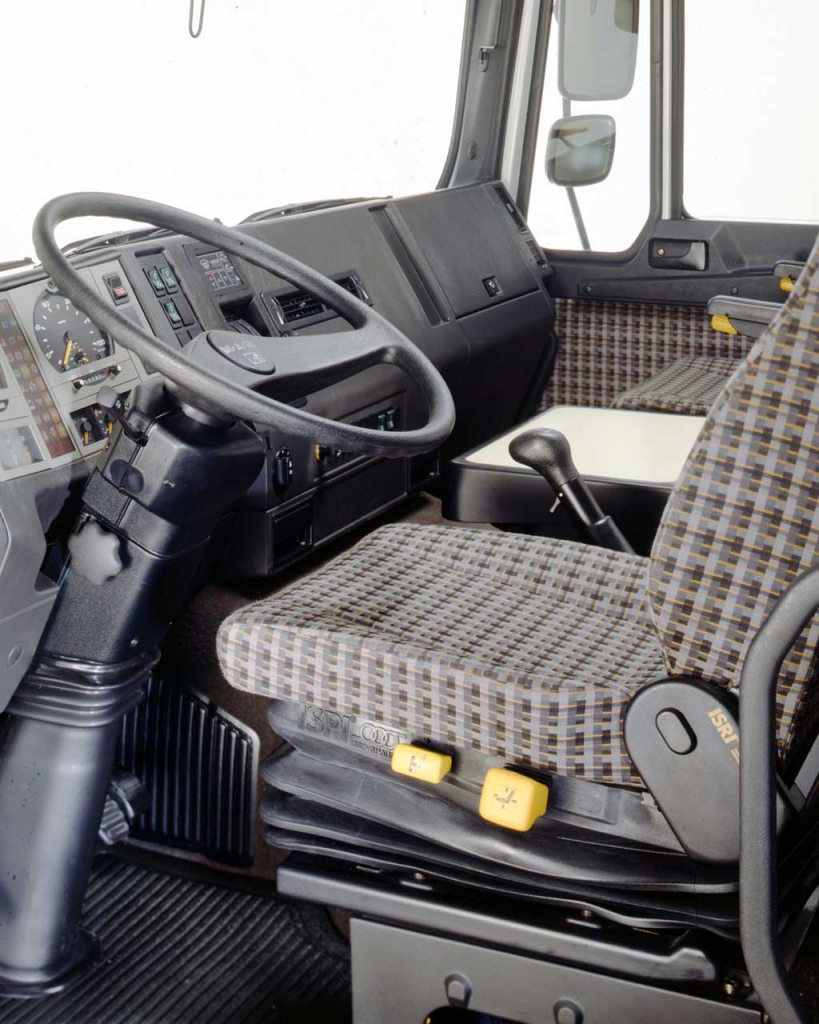
1986
Then the F90 cab model came along in 1986. Totally in keeping with the slogan in the sales brochure “Relaxed drivers drive well”, the cab was more spacious, functional, comfortable and ergonomic than its predecessors. The practical power steering and seatbelts, with which MAN equipped all its commercial vehicles as standard after 1989, were also new. The cab was available in two versions; one for long-distance traffic and one for local traffic. Both could be tilted and the windscreen was inclined by 10 degrees to improve aerodynamics.
1995
The F2000 cab launched on the market in the 90s differed from the F90 cab in several details. The F2000 had mostly round double headlights and two large vents in the bumper. There were also some innovations in the interior: on request, the new video and TV system could be installed in the cab as well as trim strips in a wood finish. The seats were also upgraded with leather upholstery and lumbar support. At that time, the cab was available in four different sizes.
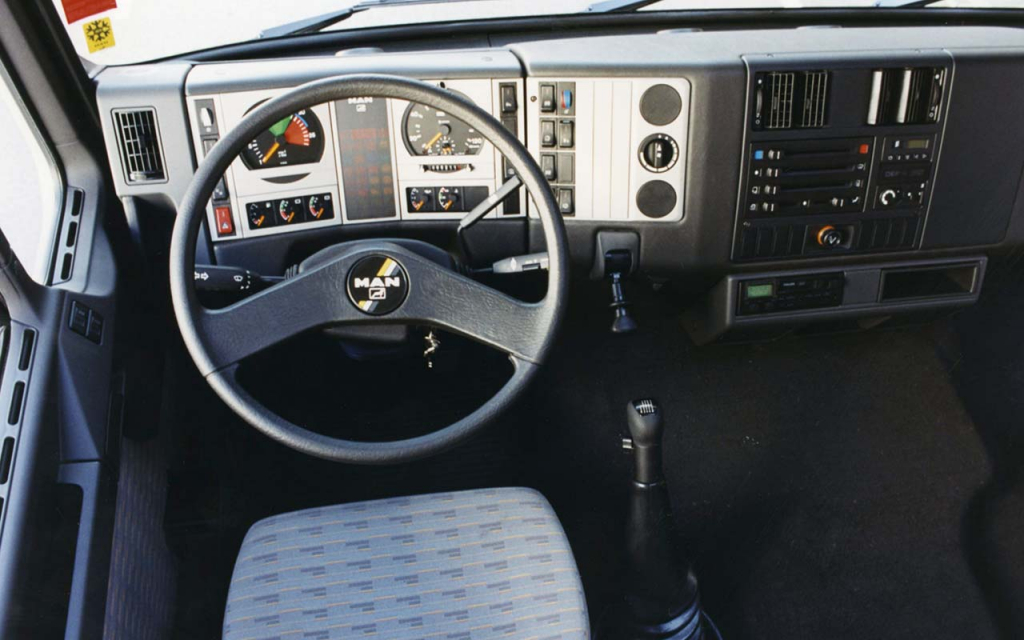

2000
In 2000, MAN presented a heavy truck model under the product name TGA, thereby setting new standards in the industry. Six different versions of the cab were available in sizes M to XXL. All of these versions featured ergonomic access and air conditioning. Comfortable mattresses up to 2.2 metres long ensured restful sleep and the entertainment system, which included a radio, TV, video player and DVD player, provided the right entertainment.
2007
The dual TGX and TGS series replaced the TGA in 2007. The drivers’ positions continued to be perfected in terms of ergonomics, comfort and functionality. High-quality materials, two-tone instrument panels and clear, logically arranged and easy to reach controls as well as a continuously adjustable steering wheel made these two models a very special driving experience.
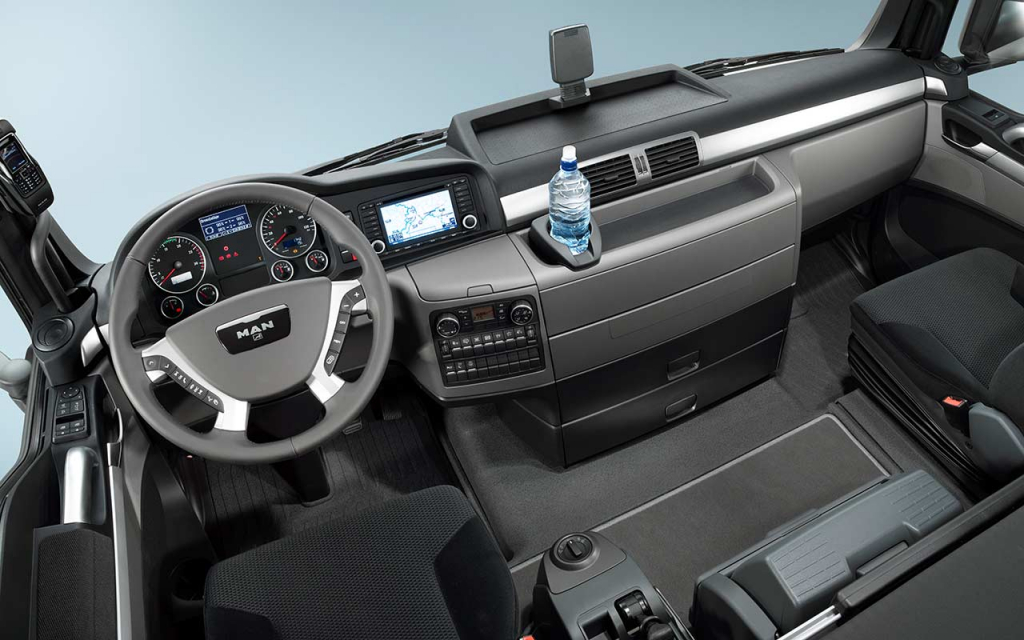

2012 – 2017
The next update to the TGL, TGM, TGS and TGX series followed in 2012. During that year, the selector switch for the TipMatic that was previously positioned next to the seat was moved to the dashboard. Drivers also found the bed with slatted frame and mattress especially comfortable for resting and sleeping. The high-quality interior fittings in the TGX and TGS have also been available in a bright look since 2017. The interior previously tended to be in dark tones.
The new MAN Truck Generation
Models in the new MAN truck generation, which were presented in 2020, are available in as many as eight different cab versions in various sizes. What they all have in common is the maximum use of space, numerous safety features and a high-quality, cosy interior.
But that’s not yet the final piece of the jigsaw, because there are further innovations planned during the second half of 2021 to early 2022 that will make the cab even safer and more user friendly.
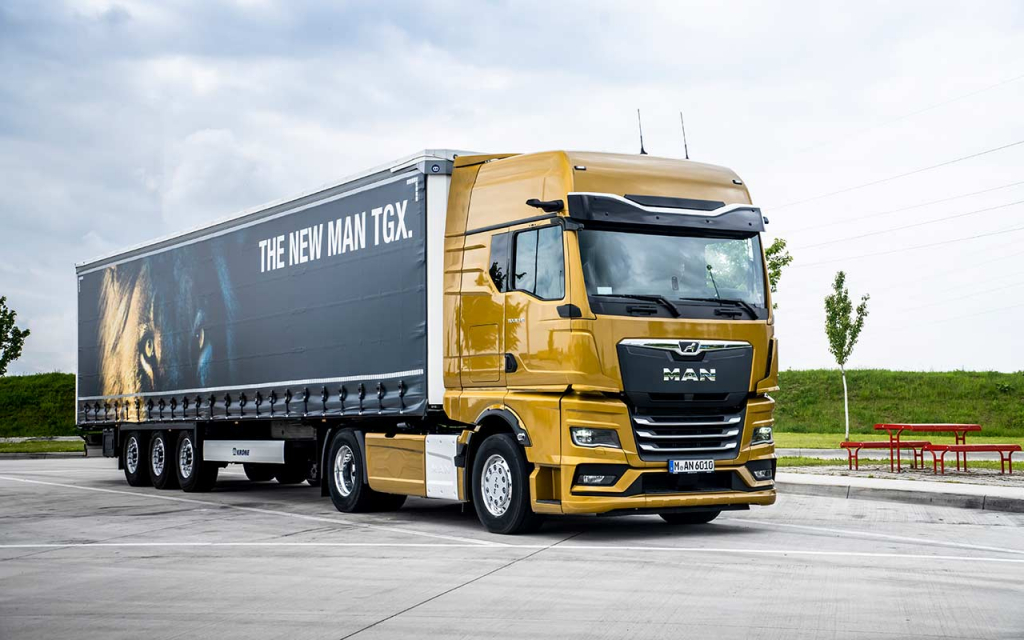
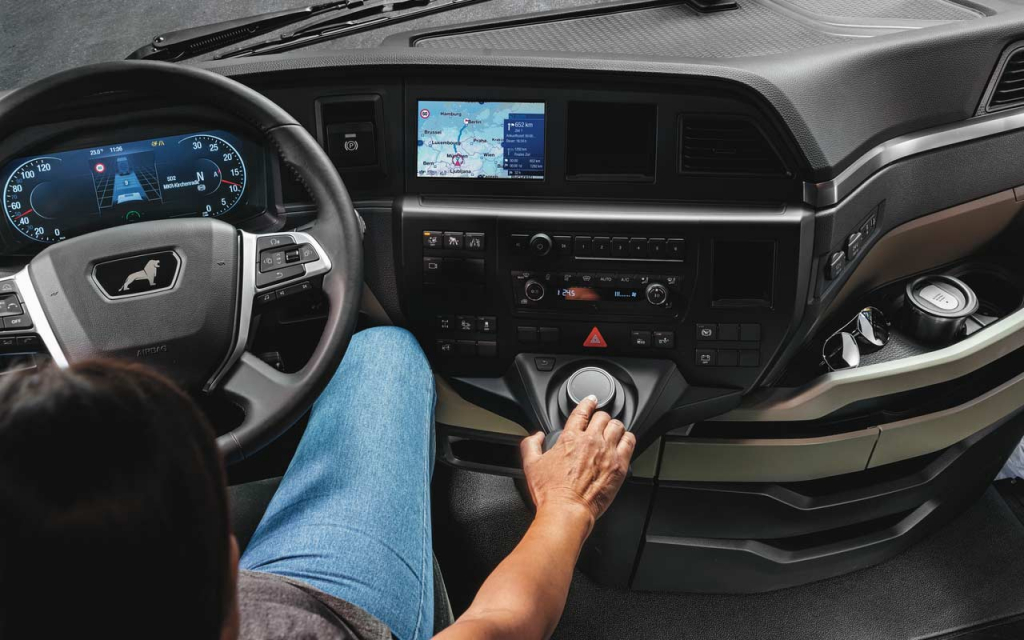
From 2021
The MAN OptiView mirror replacement system, for example, uses external cameras and internal displays mounted on the A pillars to replace not only the left and right exterior and wide-angle rear-view mirrors, but also the front and ramp mirrors. The MAN CruiseAssist driver assistance system automatically keeps the truck within its lane, maintains the legally prescribed minimum distance to vehicles in front and decelerates the truck until it comes to a standstill behind a stopped vehicle, for instance in traffic jams.
Image credits: MAN Truck & Bus SE Historisches Archiv